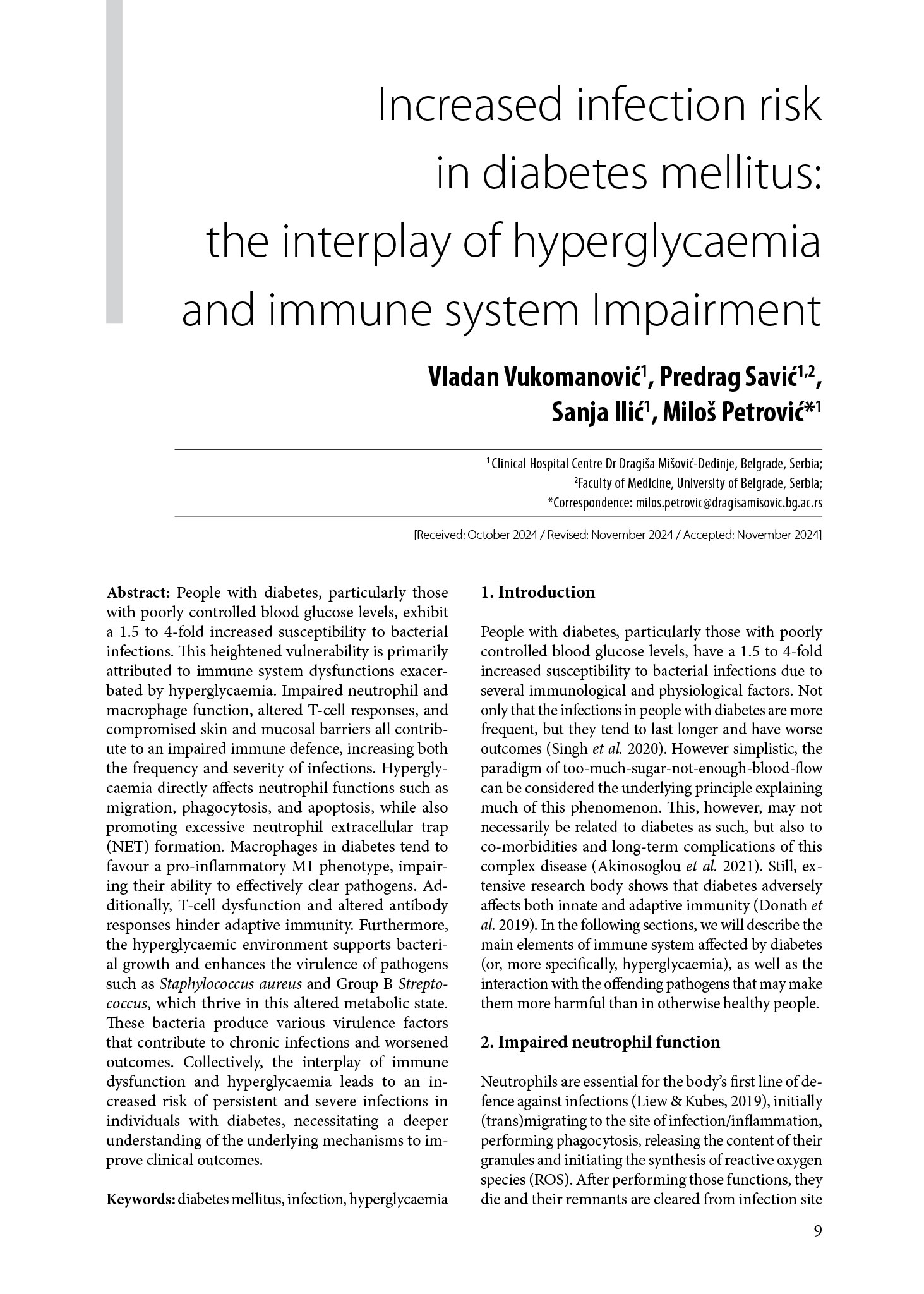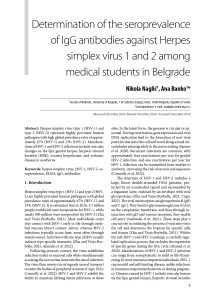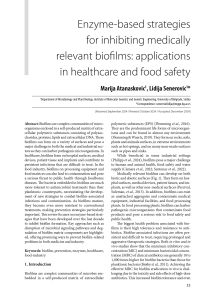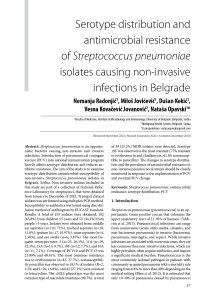1. Introduction
People with diabetes, particularly those with poorly controlled blood glucose levels, have a 1.5 to 4-fold increased susceptibility to bacterial infections due to several immunological and physiological factors. Not only that the infections in people with diabetes are more frequent, but they tend to last longer and have worse outcomes (Singh et al. 2020). However simplistic, the paradigm of too-much-sugar-not-enough-blood-flow can be considered the underlying principle explaining much of this phenomenon. This, however, may not necessarily be related to diabetes as such, but also to co-morbidities and long-term complications of this complex disease (Akinosoglou et al. 2021). Still, extensive research body shows that diabetes adversely affects both innate and adaptive immunity (Donath et al. 2019). In the following sections, we will describe the main elements of immune system affected by diabetes (or, more specifically, hyperglycaemia), as well as the interaction with the offending pathogens that may make them more harmful than in otherwise healthy people.
2. Impaired neutrophil function
Neutrophils are essential for the body’s first line of defence against infections (Liew & Kubes, 2019), initially (trans)migrating to the site of infection/inflammation, performing phagocytosis, releasing the content of their granules and initiating the synthesis of reactive oxygen species (ROS). After performing those functions, they die and their remnants are cleared from infection site (Tu et al. 2024). In people with diabetes, there are impairments of neutrophil function at each of these steps. Considering that neutrophils solely rely on glucose metabolism (DeBerardinis et al. 2007), the effects of hyperglycaemia can be ascribed to the generation of advanced glycation end products (AGE) (Tian et al. 2016) by non-enzymatic glycation of proteins (Chen et al. 2024).
2.1. Reduced transendothelial migration and chemotaxis
In people with diabetes, neutrophils have a reduced ability to migrate through the endothelial membrane and reach the extracellular space. This is attributable to the activation of RAGE on neutrophils, on one hand (Collison et al. 2002), as well as blunted up-regulation of vascular cell adhesion molecule 1 and intercellular adhesion molecule 1, factors necessary for leucocyte transmigration into surrounding extracellular space (Andreasen et al. 2010), on the other. Further, after initial contradictory findings in the early research on neutrophil migration in diabetic patients, it is considered that neutrophils in people with diabetes also exhibit impaired chemotaxis, meaning they are less able to migrate toward infection sites (Mowat & Baum, 1971). This reduced migration can result in slower responses to bacterial infections (Delamaire et al. 1997).
2.2. Decreased phagocytosis and killing
The ability of neutrophils to engulf and kill bacteria is diminished in people with diabetes, particularly due to reduced C3-mediated opsonisation (Hair et al. 2012) and defects in oxidative burst and enzyme function (Davidson et al. 1984). Hyperglycemia impairs these functions of neutrophils, leading to suboptimal pathogen clearance (Lin et al. 2006; Yano et al. 2012).
2.3. Reduced apoptosis
Among various modalities of neutrophil cell death (the others being NETosis, pyroptosis, necroptosis and ferroptosis), apoptosis normally predominates and, in doing so, serves to produce immunosuppressive signals to restrict further inflammation and tissue damage (Tu et al. 2024). Reduced apoptosis in people with diabetes was associated with impaired clearance of neutrophils by macrophages, both in vitro and in vivo, prolonged production of the proinflammatory cytokine tumour necrosis factor alpha by neutrophils from diabetic mice (Hanses et al. 2011), as well as down-regulation of caspases 3 and 9, as the key enzymes involved (Manosudprasit et al. 2017). These findings suggest that defects in neutrophil apoptosis may play a role in the chronic inflammation and the inability to eliminate pathogens in diabetic patients (Hanses et al. 2011; Javid et al. 2016).
2.4. Increased NETosis
Strictly speaking, NETosis does not necessarily need to lead to actual cell death, i.e. it can be lytic/suicidal and non-lytic/vital (H. Wang et al. 2024). Formed by expulsion of decondensed neutrophil nuclear chromatin from activated neutrophils, these extracellular filamentous structures have positive roles in restricting infection that go beyond the mechanistic ones (i.e. trapping pathogens, as the name implies), occurring via altering pathogen morphology, modifying virulence factors and disrupting bacterial biofilms. The neutrophils in diabetic patients are primed for increased NETosis (Wong et al. 2015) via the binding of AGEs to their receptor (RAGE) and increased expression of neutrophil peptidyl arginine deiminase 4 (PAD4). RAGE is a transmembrane pattern recognition receptor, having various ligands, including AGEs. Activation of RAGE leads to downstream signalling mechanisms that induce neutrophil activation and promote the formation of NETs. In forming NETs, the loss of dense chromatin structure is induced by PAD4 (Zhu et al. 2023). PAD4 is a calcium-specific enzyme which mediates histone hypercitrullination and consequent chromatin depolymerisation (Thiam et al. 2020). PAD4 expression is increased in neutrophils of patients with both T1D and T2D, making them more susceptible to NET activation (Giovenzana et al. 2022). The detrimental effects of this process may not be directly associated with reduced ability to combat infection, but to protracted wound healing, providing access to pathogens via disturbed tissue barrier.
3. Impaired macrophage function
Macrophages play a key role in immune defence, having three main functions: phagocytosis, exogenous antigen presentation and immune regulation (Luo et al. 2024). However, their functions are also compromised in diabetes.
Mimicking a Th1/Th2 duality in T helper lymphocytes, macrophages can be divided into M1 (“classically activated”) and M2 (“alternatively activated”) phenotypes (Luo et al. 2024). The caveat here is that, in reality, macrophages exist on a spectrum, with M1/M2 dichotomy being a useful simplification. Either way, interferon-α (INF-α), IL-12 and IL-23 polarise resting macrophages (M0) into M1-like macrophages (M1), whereas IL-4 and IL-10 stimulate the development of M2-like phenotype. The former are believed to have pro-inflammatory, whereas the latter are believed to have wound-healing ability. In diabetes, the macrophages tend to polarise toward M1 phenotype (Sun et al. 2024), which, in principle, should increase the ability of macrophages in diabetic patients to protect them against bacteria. However, similar to neutrophil dysfunction, hyperglycaemia disrupts macrophage phagocytic (Q. Wang et al. 2017), bactericidal (Pavlou et al. 2018), as well as antigen-presenting function (Nie et al. 2021). With regards to reduced phagocytic function, its initiation is compromised by reduced function and/or expression of complement receptor 3 (CR3) and Fc-gamma receptor (FcγRs) (Restrepo et al. 2014). Whether this is attributable to intrinsic reprogramming of cells or the noxious effects of the local hyperglycaemic environment remains a paradox that is still to be resolved.
4. Altered T-cell function
T cells, which are essential for adaptive immunity, also exhibit dysfunction in people with diabetes. The mechanisms by which this occurs are, to a certain extent, similar to those impeding the function of innate immunity. Namely, reduced expression of adhesion molecules such as intercellular adhesion molecules (ICAM) and E selectin on endothelial cells impairs the recruitment of cytotoxic CD8+ T lymphocytes to infection sites (Kumar et al. 2014) Further, reduced phagocytosis and cytokine secretion by innate immunity cells and delayed recruitment of antigen-presenting cells (APCs) lead to delayed activation of adaptive immunity, allowing the replication of pathogens to continue (Pari et al. 2023). Again, the effect seems to be mediated by hyperglycaemia, as exemplified by the reduced function of memory CD8+ T-cells upon viral re-challenge (Kavazović et al. 2022). Activation of cellular immunity is supported and amplified by CD8+ T cells, which produce cytokines that attract other component of adaptive immune system. With regards to adaptive immunity, glycation negatively affects the function of antibodies themselves, further contributing to the state of immunodeficiency in people with diabetes (Fournet et al. 2018)
5. Impaired skin and mucosal barriers
Diabetes can compromise the integrity of the skin and mucosal barriers, further increasing infection risk. The main factors contributing to the development of diabetic foot ulcers are peripheral arterial disease, peripheral neuropathy, bacterial infection, and immune cell dysfunction (Deng et al. 2023). Of those, peripheral angiopathy, manifested by accelerated atherosclerosis of distal arteries in lower limbs are the primary culprit. It is nevertheless associated with the loss of protective positioning and unawareness of pain associated with it, combined with skin dryness occurring as a result of sensory and autonomic neuropathy, respectively. Once initiated, the process is aggravated by the consequences of immune system dysfunction described above, which results in restricted ability to restrain the infection and impaired wound healing.
6. Hyperglycaemia-mediated increase in bacterial growth and virulence
Switching to the other side, hyperglycaemia is literally a fertile ground for bacteria typical of infections in people with diabetes – the worse the glycaemic control is, the more frequent are the bacterial infection in various sites (Hine et al. 2017), e.g. bronchitis, pneumonia, skin and soft tissue infections, urinary tract infections, and genital and perineal infections. Both humans and bacteria utilise glucose, metabolising it via different pathways (O’Connor et al. 2024).
A remarkable adaptability of Staphylococcus aureus to various environments within human body makes it one of the most important pathogens for both surface (skin and soft tissue infections – SSTIs) and confined infections (e.g. osteomyelitis) in people with diabetes. It thrives in hyperglycaemic environment, which not only provides abundant source of energy, but also stimulates the production of its various virulence factors. In relation to that, production of reactive oxygen species (ROS) is one of the defence mechanisms utilised by immune system. However, hyperglycaemia stimulates the expression of S. aureus superoxide dismutase which allows it to detoxify its environment, allowing it to survive (Butrico et al. 2023).
Another S. aureus virulence factor increased in hyperglycaemic environment is caseinolytic protease (Clp), a family of bacterial proteases involved in the proteolytic elimination of misfolded or aggregated proteins (Aljghami et al. 2022), the expression of which contributes to worse outcomes of S. aureus infections (Jacquet et al. 2019; Kim et al. 2020).
Another important concept in understanding the defence mechanisms against bacteria is nutritional immunity – the ability of a host to sequester and starve invading pathogens of trace minerals and nutrients (Hennigar & McClung, 2016). The opposite occurs in diabetes, with hyperglycaemia providing a source of energy, which, when combined with metabolic adaptations to better utilise it (e.g. via expression of glucose transporters (Vitko et al. 2016)) and the reduced utilisation of glucose by immune cells described above, creates favourable conditions for bacterial growth.
Biofilms are aggregates of microorganisms in which cells are frequently embedded in a self-produced matrix of extracellular polymeric substances (EPS) that are adherent to each other and/or a surface (Flemming et al. 2016), allowing for social and physical interactions, conferring antibiotic and immunologic resistance. Aureolysin (Aur) is one of the major virulence factor in S. aureus, as it is crucial for its biofilm formation and its expression is increased in hyperglycaemic environment (Wei et al. 2022).
To regulate collective behaviour in transitioning from individual life to a highly organised three-dimensional structure of a biofilm, bacteria utilise quorum sensing, a mode of communication activated upon reaching a certain cell density, which allows coordinated gene expression in bacteria (Mitra, 2024). In S. aureus, the process is controlled by agr locus, which is a quorum-sensing regulator. Importantly, hyperglycaemia stimulates its activity, facilitating the formation of a biofilm-like aggregate that is able to disseminate to peripheral organs (Thurlow et al. 2020).
People with diabetes are particularly prone to UTIs and Group B Streptococcus is a prominent causative agent (Geerlings et al. 2014). In healthy people, lack of nutrients, high concentration of urea, acidification and induction of antimicrobial peptide production if infection occurs serve as protective factors. Glycosuria, however, is shown to facilitate GBS infection via increased GBS adherence to human bladder epithelial cell line, expression of corresponding PI2a fimbrial gene, antimicrobial peptide LL-37 resistance, GBS haemolytic ability and expression of genes encoding pore-forming toxins (John et al. 2021).
7. Conclusion
People with diabetes are at increased risk of bacterial infections due to a combination of factors, including impaired neutrophil and macrophage function, altered T-cell responses, the effects of hyperglycaemia on immune cells, and defects in skin and mucosal barriers. Together, these factors hinder the immune system’s ability to fight off infections. In addition, hyperglycaemic environment itself is conducive to growth and reproduction of bacteria, as well as to the increase of their virulence.
Funding: Not applicable.
Informed Consent Statement: Not applicable.
Data Availability Statement: Not applicable.
Conflicts of Interest: The authors declare no conflicts of interest.
References:
Akinosoglou, K., Kapsokosta, G., Mouktaroudi, M., Rovina, N., Kaldis, V., Stefos, A., Kontogiorgi, M., Giamarellos-Bourboulis, E., Gogos, C., & Hellenic Sepsis Study Group. (2021). Diabetes on sepsis outcomes in non-ICU patients: A cohort study and review of the literature. Journal of Diabetes and Its Complications, 35(1), 107765. https://doi.org/10.1016/j.jdiacomp.2020.107765
Aljghami, M. E., Barghash, M. M., Majaesic, E., Bhandari, V., & Houry, W. A. (2022). Cellular functions of the ClpP protease impacting bacterial virulence. Frontiers in Molecular Biosciences, 9, 1054408. https://doi.org/10.3389/fmolb.2022.1054408
Andreasen, A. S., Pedersen-Skovsgaard, T., Berg, R. M. G., Svendsen, K. D., Feldt-Rasmussen, B., Pedersen, B. K., & Møller, K. (2010). Type 2 diabetes mellitus is associated with impaired cytokine response and adhesion molecule expression in human endotoxemia. Intensive Care Medicine, 36(9), 1548–1555. https://doi.org/10.1007/s00134-010-1845-1
Butrico, C. E., Klopfenstein, N., Green, E. R., Johnson, J. R., Peck, S. H., Ibberson, C. B., Serezani, C. H., & Cassat, J. E. (2023). Hyperglycemia Increases Severity of Staphylococcus aureus Osteomyelitis and Influences Bacterial Genes Required for Survival in Bone. Infection and Immunity, 91(4), e0052922. https://doi.org/10.1128/iai.00529-22
Chen, Y., Meng, Z., Li, Y., Liu, S., Hu, P., & Luo, E. (2024). Advanced glycation end products and reactive oxygen species: Uncovering the potential role of ferroptosis in diabetic complications. Molecular Medicine (Cambridge, Mass.), 30(1), 141. https://doi.org/10.1186/s10020-024-00905-9
Collison, K. S., Parhar, R. S., Saleh, S. S., Meyer, B. F., Kwaasi, A. A., Hammami, M. M., Schmidt, A. M., Stern, D. M., & Al-Mohanna, F. A. (2002). RAGE-mediated neutrophil dysfunction is evoked by advanced glycation end products (AGEs). Journal of Leukocyte Biology, 71(3), 433–444.
Davidson, N. J., Sowden, J. M., & Fletcher, J. (1984). Defective phagocytosis in insulin controlled diabetics: Evidence for a reaction between glucose and opsonising proteins. Journal of Clinical Pathology, 37(7), 783–786. https://doi.org/10.1136/jcp.37.7.783
DeBerardinis, R. J., Mancuso, A., Daikhin, E., Nissim, I., Yudkoff, M., Wehrli, S., & Thompson, C. B. (2007). Beyond aerobic glycolysis: Transformed cells can engage in glutamine metabolism that exceeds the requirement for protein and nucleotide synthesis. Proceedings of the National Academy of Sciences of the United States of America, 104(49), 19345–19350. https://doi.org/10.1073/pnas.0709747104
Delamaire, M., Maugendre, D., Moreno, M., Le Goff, M. C., Allannic, H., & Genetet, B. (1997). Impaired leucocyte functions in diabetic patients. Diabetic Medicine: A Journal of the British Diabetic Association, 14(1), 29–34. https://doi.org/10.1002/(SICI)1096-9136(199701)14:1<29::AID-DIA300>3.0.CO;2-V
Deng, H., Li, B., Shen, Q., Zhang, C., Kuang, L., Chen, R., Wang, S., Ma, Z., & Li, G. (2023). Mechanisms of diabetic foot ulceration: A review. Journal of Diabetes, 15(4), 299–312. https://doi.org/10.1111/1753-0407.13372
Donath, M. Y., Dinarello, C. A., & Mandrup-Poulsen, T. (2019). Targeting innate immune mediators in type 1 and type 2 diabetes. Nature Reviews. Immunology, 19(12), 734–746. https://doi.org/10.1038/s41577-019-0213-9
Flemming, H.-C., Wingender, J., Szewzyk, U., Steinberg, P., Rice, S. A., & Kjelleberg, S. (2016). Biofilms: An emergent form of bacterial life. Nature Reviews. Microbiology, 14(9), 563–575. https://doi.org/10.1038/nrmicro.2016.94
Fournet, M., Bonté, F., & Desmoulière, A. (2018). Glycation Damage: A Possible Hub for Major Pathophysiological Disorders and Aging. Aging and Disease, 9(5), 880–900. https://doi.org/10.14336/AD.2017.1121
Geerlings, S., Fonseca, V., Castro-Diaz, D., List, J., & Parikh, S. (2014). Genital and urinary tract infections in diabetes: Impact of pharmacologically-induced glucosuria. Diabetes Research and Clinical Practice, 103(3), 373–381. https://doi.org/10.1016/j.diabres.2013.12.052
Giovenzana, A., Carnovale, D., Phillips, B., Petrelli, A., & Giannoukakis, N. (2022). Neutrophils and their role in the aetiopathogenesis of type 1 and type 2 diabetes. Diabetes/Metabolism Research and Reviews, 38(1), e3483. https://doi.org/10.1002/dmrr.3483
Hair, P. S., Echague, C. G., Rohn, R. D., Krishna, N. K., Nyalwidhe, J. O., & Cunnion, K. M. (2012). Hyperglycemic conditions inhibit C3-mediated immunologic control of Staphylococcus aureus. Journal of Translational Medicine, 10, 35. https://doi.org/10.1186/1479-5876-10-35
Hanses, F., Park, S., Rich, J., & Lee, J. C. (2011). Reduced neutrophil apoptosis in diabetic mice during staphylococcal infection leads to prolonged Tnfα production and reduced neutrophil clearance. PloS One, 6(8), e23633. https://doi.org/10.1371/journal.pone.0023633
Hennigar, S. R., & McClung, J. P. (2016). Nutritional Immunity: Starving Pathogens of Trace Minerals. American Journal of Lifestyle Medicine, 10(3), 170–173. https://doi.org/10.1177/1559827616629117
Hine, J. L., de Lusignan, S., Burleigh, D., Pathirannehelage, S., McGovern, A., Gatenby, P., Jones, S., Jiang, D., Williams, J., Elliot, A. J., Smith, G. E., Brownrigg, J., Hinchliffe, R., & Munro, N. (2017). Association between glycaemic control and common infections in people with Type 2 diabetes: A cohort study. Diabetic Medicine: A Journal of the British Diabetic Association, 34(4), 551–557. https://doi.org/10.1111/dme.13205
Jacquet, R., LaBauve, A. E., Akoolo, L., Patel, S., Alqarzaee, A. A., Wong Fok Lung, T., Poorey, K., Stinear, T. P., Thomas, V. C., Meagher, R. J., & Parker, D. (2019). Dual Gene Expression Analysis Identifies Factors Associated with Staphylococcus aureus Virulence in Diabetic Mice. Infection and Immunity, 87(5), e00163-19. https://doi.org/10.1128/IAI.00163-19
Javid, A., Zlotnikov, N., Pětrošová, H., Tang, T. T., Zhang, Y., Bansal, A. K., Ebady, R., Parikh, M., Ahmed, M., Sun, C., Newbigging, S., Kim, Y. R., Santana Sosa, M., Glogauer, M., & Moriarty, T. J. (2016). Hyperglycemia Impairs Neutrophil-Mediated Bacterial Clearance in Mice Infected with the Lyme Disease Pathogen. PloS One, 11(6), e0158019. https://doi.org/10.1371/journal.pone.0158019
John, P. P., Baker, B. C., Paudel, S., Nassour, L., Cagle, H., & Kulkarni, R. (2021). Exposure to Moderate Glycosuria Induces Virulence of Group B Streptococcus. The Journal of Infectious Diseases, 223(5), 843–847. https://doi.org/10.1093/infdis/jiaa443
Kavazović, I., Krapić, M., Beumer-Chuwonpad, A., Polić, B., Turk Wensveen, T., Lemmermann, N. A., van Gisbergen, K. P. J. M., & Wensveen, F. M. (2022). Hyperglycemia and Not Hyperinsulinemia Mediates Diabetes-Induced Memory CD8 T-Cell Dysfunction. Diabetes, 71(4), 706–721. https://doi.org/10.2337/db21-0209
Kim, G.-L., Akoolo, L., & Parker, D. (2020). The ClpXP Protease Contributes to Staphylococcus aureus Pneumonia. The Journal of Infectious Diseases, 222(8), 1400–1404. https://doi.org/10.1093/infdis/jiaa251
Kumar, M., Roe, K., Nerurkar, P. V., Orillo, B., Thompson, K. S., Verma, S., & Nerurkar, V. R. (2014). Reduced immune cell infiltration and increased pro-inflammatory mediators in the brain of Type 2 diabetic mouse model infected with West Nile virus. Journal of Neuroinflammation, 11, 80. https://doi.org/10.1186/1742-2094-11-80
Liew, P. X., & Kubes, P. (2019). The Neutrophil’s Role During Health and Disease. Physiological Reviews, 99(2), 1223–1248. https://doi.org/10.1152/physrev.00012.2018
Lin, J.-C., Siu, L. K., Fung, C.-P., Tsou, H.-H., Wang, J.-J., Chen, C.-T., Wang, S.-C., & Chang, F.-Y. (2006). Impaired phagocytosis of capsular serotypes K1 or K2 Klebsiella pneumoniae in type 2 diabetes mellitus patients with poor glycemic control. The Journal of Clinical Endocrinology and Metabolism, 91(8), 3084–3087. https://doi.org/10.1210/jc.2005-2749
Luo, M., Zhao, F., Cheng, H., Su, M., & Wang, Y. (2024). Macrophage polarization: An important role in inflammatory diseases. Frontiers in Immunology, 15, 1352946. https://doi.org/10.3389/fimmu.2024.1352946
Manosudprasit, A., Kantarci, A., Hasturk, H., Stephens, D., & Van Dyke, T. E. (2017). Spontaneous PMN apoptosis in type 2 diabetes and the impact of periodontitis. Journal of Leukocyte Biology, 102(6), 1431–1440. https://doi.org/10.1189/jlb.4A0416-209RR
Mitra, A. (2024). Combatting biofilm-mediated infections in clinical settings by targeting quorum sensing. Cell Surface (Amsterdam, Netherlands), 12, 100133. https://doi.org/10.1016/j.tcsw.2024.100133
Mowat, A., & Baum, J. (1971). Chemotaxis of polymorphonuclear leukocytes from patients with diabetes mellitus. The New England Journal of Medicine, 284(12), 621–627. https://doi.org/10.1056/NEJM197103252841201
Nie, L., Zhao, P., Yue, Z., Zhang, P., Ji, N., Chen, Q., & Wang, Q. (2021). Diabetes induces macrophage dysfunction through cytoplasmic dsDNA/AIM2 associated pyroptosis. Journal of Leukocyte Biology, 110(3), 497–510. https://doi.org/10.1002/JLB.3MA0321-745R
O’Connor, M. J., Bartler, A. V., Ho, K. C., Zhang, K., Casas Fuentes, R. J., Melnick, B. A., Huffman, K. N., Hong, S. J., & Galiano, R. D. (2024). Understanding Staphylococcus aureus in hyperglycaemia: A review of virulence factor and metabolic adaptations. Wound Repair and Regeneration: Official Publication of the Wound Healing Society [and] the European Tissue Repair Society, 32(5), 661–670. https://doi.org/10.1111/wrr.13192
Pari, B., Gallucci, M., Ghigo, A., & Brizzi, M. F. (2023). Insight on Infections in Diabetic Setting. Biomedicines, 11(3), 971. https://doi.org/10.3390/biomedicines11030971
Pavlou, S., Lindsay, J., Ingram, R., Xu, H., & Chen, M. (2018). Sustained high glucose exposure sensitizes macrophage responses to cytokine stimuli but reduces their phagocytic activity. BMC Immunology, 19(1), 24. https://doi.org/10.1186/s12865-018-0261-0
Restrepo, B. I., Twahirwa, M., Rahbar, M. H., & Schlesinger, L. S. (2014). Phagocytosis via complement or Fc-gamma receptors is compromised in monocytes from type 2 diabetes patients with chronic hyperglycemia. PloS One, 9(3), e92977. https://doi.org/10.1371/journal.pone.0092977
Singh, A. K., Gillies, C. L., Singh, R., Singh, A., Chudasama, Y., Coles, B., Seidu, S., Zaccardi, F., Davies, M. J., & Khunti, K. (2020). Prevalence of co-morbidities and their association with mortality in patients with COVID-19: A systematic review and meta-analysis. Diabetes, Obesity & Metabolism, 22(10), 1915–1924. https://doi.org/10.1111/dom.14124
Sun, D., Chang, Q., & Lu, F. (2024). Immunomodulation in diabetic wounds healing: The intersection of macrophage reprogramming and immunotherapeutic hydrogels. Journal of Tissue Engineering, 15, 20417314241265202. https://doi.org/10.1177/20417314241265202
Thiam, H. R., Wong, S. L., Wagner, D. D., & Waterman, C. M. (2020). Cellular Mechanisms of NETosis. Annual Review of Cell and Developmental Biology, 36, 191–218. https://doi.org/10.1146/annurev-cellbio-020520-111016
Thurlow, L. R., Stephens, A. C., Hurley, K. E., & Richardson, A. R. (2020). Lack of nutritional immunity in diabetic skin infections promotes Staphylococcus aureus virulence. Science Advances, 6(46), eabc5569. https://doi.org/10.1126/sciadv.abc5569
Tian, M., Qing, C., Niu, Y., Dong, J., Cao, X., Song, F., Ji, X., & Lu, S. (2016). The Relationship Between Inflammation and Impaired Wound Healing in a Diabetic Rat Burn Model. Journal of Burn Care & Research: Official Publication of the American Burn Association, 37(2), e115-124. https://doi.org/10.1097/BCR.0000000000000171
Tu, H., Ren, H., Jiang, J., Shao, C., Shi, Y., & Li, P. (2024). Dying to Defend: Neutrophil Death Pathways and their Implications in Immunity. Advanced Science (Weinheim, Baden-Wurttemberg, Germany), 11(8), e2306457. https://doi.org/10.1002/advs.202306457
Vitko, N. P., Grosser, M. R., Khatri, D., Lance, T. R., & Richardson, A. R. (2016). Expanded Glucose Import Capability Affords Staphylococcus aureus Optimized Glycolytic Flux during Infection. mBio, 7(3), e00296-16. https://doi.org/10.1128/mBio.00296-16
Wang, H., Kim, S. J., Lei, Y., Wang, S., Wang, H., Huang, H., Zhang, H., & Tsung, A. (2024). Neutrophil extracellular traps in homeostasis and disease. Signal Transduction and Targeted Therapy, 9(1), 235. https://doi.org/10.1038/s41392-024-01933-x
Wang, Q., Zhu, G., Cao, X., Dong, J., Song, F., & Niu, Y. (2017). Blocking AGE-RAGE Signaling Improved Functional Disorders of Macrophages in Diabetic Wound. Journal of Diabetes Research, 2017, 1428537. https://doi.org/10.1155/2017/1428537
Wei, R., Wang, X., Wang, Q., Qiang, G., Zhang, L., & Hu, H.-Y. (2022). Hyperglycemia in Diabetic Skin Infections Promotes Staphylococcus aureus Virulence Factor Aureolysin: Visualization by Molecular Imaging. ACS Sensors, 7(11), 3416–3421. https://doi.org/10.1021/acssensors.2c01565
Wong, S. L., Demers, M., Martinod, K., Gallant, M., Wang, Y., Goldfine, A. B., Kahn, C. R., & Wagner, D. D. (2015). Diabetes primes neutrophils to undergo NETosis, which impairs wound healing. Nature Medicine, 21(7), 815–819. https://doi.org/10.1038/nm.3887
Yano, H., Kinoshita, M., Fujino, K., Nakashima, M., Yamamoto, Y., Miyazaki, H., Hamada, K., Ono, S., Iwaya, K., Saitoh, D., Seki, S., & Tanaka, Y. (2012). Insulin treatment directly restores neutrophil phagocytosis and bactericidal activity in diabetic mice and thereby improves surgical site Staphylococcus aureus infection. Infection and Immunity, 80(12), 4409–4416. https://doi.org/10.1128/IAI.00787-12
Zhu, Y., Xia, X., He, Q., Xiao, Q.-A., Wang, D., Huang, M., & Zhang, X. (2023). Diabetes-associated neutrophil NETosis: Pathogenesis and interventional target of diabetic complications. Frontiers in Endocrinology, 14, 1202463. https://doi.org/10.3389/fendo.2023.1202463




